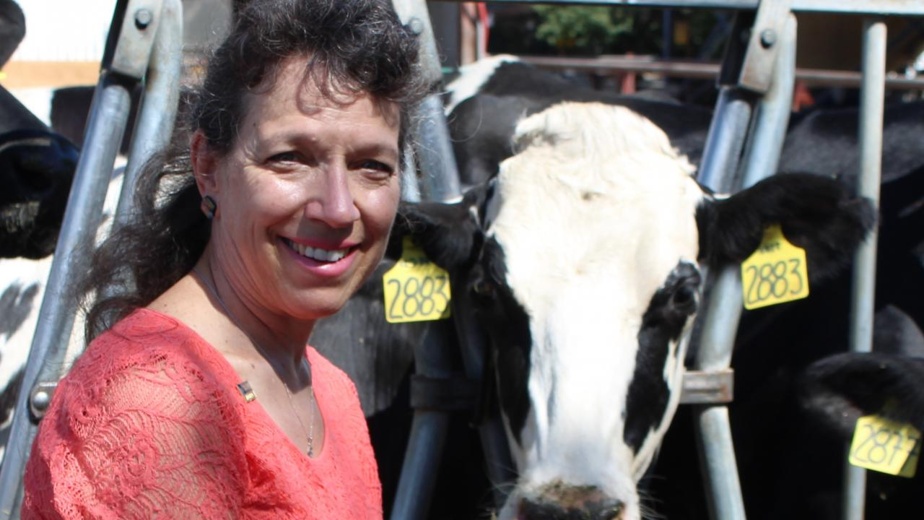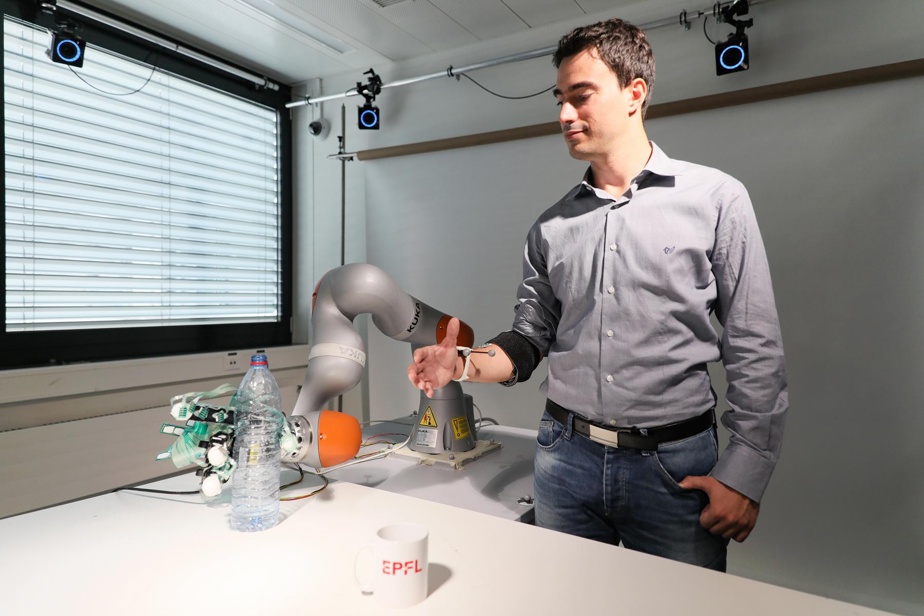(Washington) Genetically modified microbes and manure enhancement to help beef farms produce less methane. Robots linked to satellites to locate and exploit methane leaks from interregional and urban wells and gas pipelines. These are the two pillars of the American plan to reduce methane emissions by 30% by 2030.
“Tackling methane allows us to act quickly on climate,” says Lori Bruhwiler, methane monitoring manager for the United States Oceanic and Atmospheric Administration (NOAA). “It disappears in ten years from the atmosphere and it is a greenhouse gas 80 times more powerful than CO2. It is a fruit within our reach. » CO2 persists for 100 years in the atmosphere.
The American plan to reduce methane emissions, unveiled in 2021, targets companies exploiting hydrocarbons in the first place. “Estimates of economically viable emission reductions from oil and gas production and transportation range from 45% to 77%,” says Ms.me Bruhwiler. It would cost companies nothing, which means that we can think that the sector could reduce its emissions further, by 50%. But so far, only two of the Big Five producers in the United States have announced that they are on board with our halving plan. So I think we should focus instead on other emissions on which we can act quickly, in particular cattle farms and garbage dumps. »

Biogas on farms
As far as garbage dumps are concerned, the capture of biogas is financed by well-established programs. These programs are being extended to beef farms, according to University of California Davis agronomist Deanne Meyer.
“It’s especially important on farms in states that have cold winters, because cow droppings are collected there in liquid form,” she explains. Methane emissions are higher than with solid manure, such as on open farms in the southern United States. We have 250 biogas projects on 240 farms in California, half of which are subsidized by federal climate programs. We believe we can reduce emissions from the cattle sector by a quarter by 2030 largely with biogas. »
The work focuses on cow burps, the source of 80% of cattle emissions.

PHOTO FROM UNIVERSITY OF CALIFORNIA DAVIS WEBSITE
Deanne Meyer, agronomist from the University of California at Davis
We try algae, probiotics, different microbes, genetically modified microbes. But so far, nothing works permanently.
Deanne Meyer, agronomist from the University of California at Davis
“It’s as if the methane factory that is a cow always manages to return to its normal production after six to eight weeks, even for probiotics approved in Europe for cattle feed,” says Ms.me Mayer.
“There is also the problem of lactation studies: for a new technique to be adopted, says the agronomist, lactation must be monitored over a year, to detect any change in performance. »
Avoid leaks
To overcome resistance from the hydrocarbon sector, Arvind Ravikumar, a geological engineer from the University of Texas at Austin, is setting up a system integrating measurements by satellite, plane, drone, automobile and fixed sites of methane emissions. “The objective is to quantify exactly the methane that escapes and to see where and how the emissions can be avoided, and especially which ones can be. There are sometimes variations by a factor of 100 in the same day. And 40% of emissions are due to catastrophic events, which represent only 1% of individual leaks. »
The fight against methane emissions is particularly important because it could be intensified if catastrophic warning signs appear, according to Ms.me Bruhwiler. “Methane is precisely one of the great dangers of climate change. There is four times more methane in the Arctic permafrost than humanity has ever emitted since the beginning of agriculture. If the temperature increases by 3°C, methane emissions could double by the XXIIe century. »
Other congress news
Evaluate Balance
Harvard researchers have developed a portable plantar pressure meter that could for the first time quantify a person’s balance and therefore their risk of falling. Two studies are underway to confirm the clinical utility of this plantar pressure meter. Falls in the elderly kill 39,000 people each year in the United States. By transposing these figures to Quebec, we arrive at a death toll of 1000 per year.
A large radio telescope

PHOTO FROM THE NATIONAL RADIO ASTRONOMY OBSERVATORY WEBSITE
The Very Large Observatory in New Mexico
Nearly 250 antennas in four American states and in Mexico: this is the “very large second-generation observatory” project (ngVLA, next-generation Very Large Array) developed by American astronomers. Their current observatory, the VLA, comprises 28 antennas in New Mexico and would form the heart of the ngVLA. The project, which aims for commissioning in 2035, could involve Canada. The VLA was popularized by the 1997 movie Contact with Jodie Foster.
A third arm

PHOTO FROM THE WEBSITE OF THE FEDERAL POLYTECHNICAL SCHOOL OF LAUSANNE
The third arm of the École polytechnique fédérale de Lausanne used by a student
A Swiss neuroengineer has developed a robotic “third arm” that could possibly be controlled by the human brain. Silvestro Micera, from the École polytechnique fédérale de Lausanne, presented his plan on Friday to achieve this. “Third arms” have already been invented, in particular by the American army, but they are manipulated by the two hands of their operator and are intended to increase human strength. More traditional, neuropsychologist Tamar Makin, from the University of Cambridge, UK, demonstrated her ‘second thumb’ being controlled by the big toe via a wire – a wireless version is in the works. preparation. This second thumb allows you to hold something while using your fingers.
Learn more
-
- 16%
- Contribution of methane to climate change for 20 years
Source: NOAA
